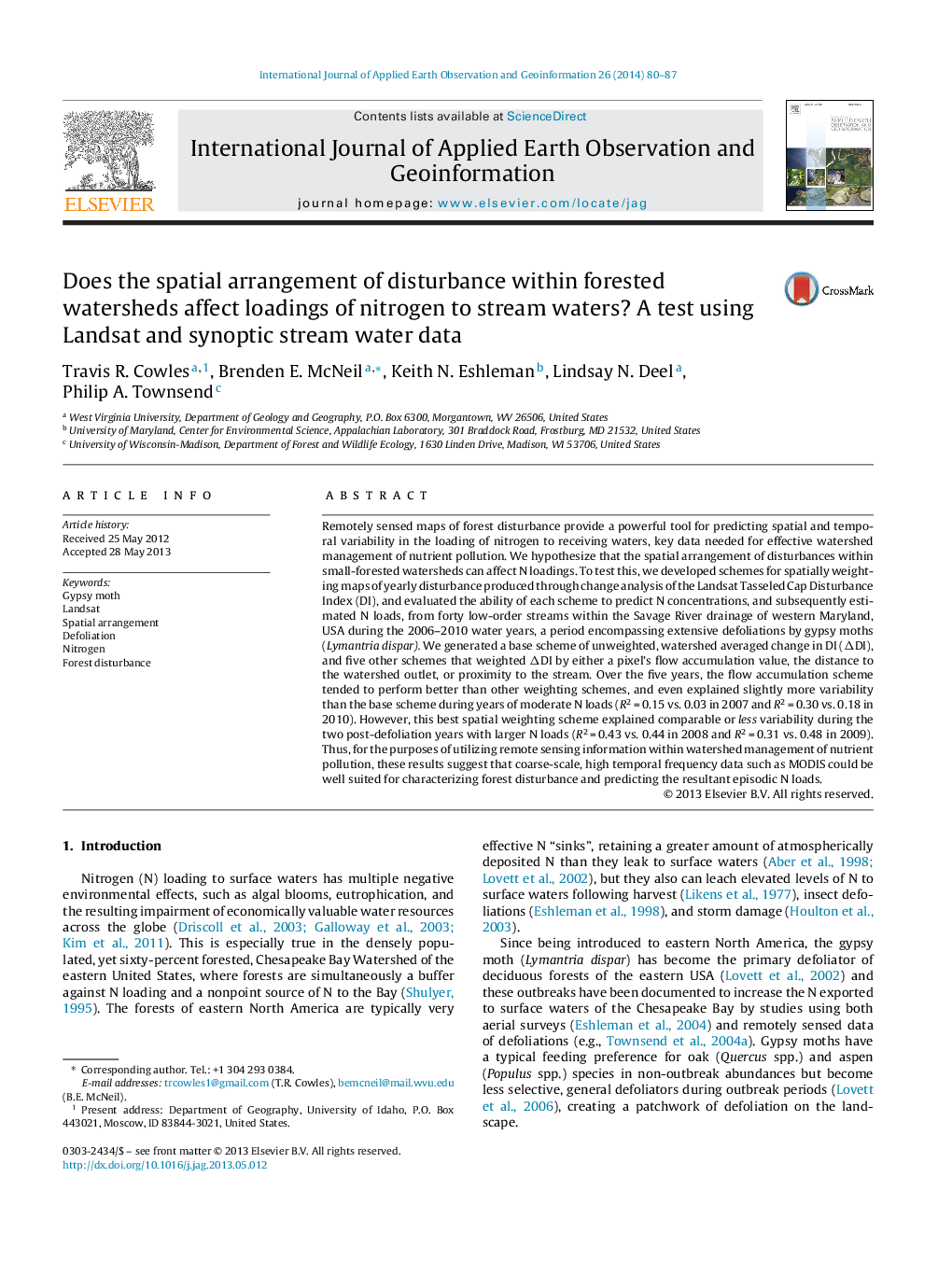| Article ID | Journal | Published Year | Pages | File Type |
|---|---|---|---|---|
| 6349101 | International Journal of Applied Earth Observation and Geoinformation | 2014 | 8 Pages |
Abstract
Remotely sensed maps of forest disturbance provide a powerful tool for predicting spatial and temporal variability in the loading of nitrogen to receiving waters, key data needed for effective watershed management of nutrient pollution. We hypothesize that the spatial arrangement of disturbances within small-forested watersheds can affect N loadings. To test this, we developed schemes for spatially weighting maps of yearly disturbance produced through change analysis of the Landsat Tasseled Cap Disturbance Index (DI), and evaluated the ability of each scheme to predict N concentrations, and subsequently estimated N loads, from forty low-order streams within the Savage River drainage of western Maryland, USA during the 2006-2010 water years, a period encompassing extensive defoliations by gypsy moths (Lymantria dispar). We generated a base scheme of unweighted, watershed averaged change in DI (ÎDI), and five other schemes that weighted ÎDI by either a pixel's flow accumulation value, the distance to the watershed outlet, or proximity to the stream. Over the five years, the flow accumulation scheme tended to perform better than other weighting schemes, and even explained slightly more variability than the base scheme during years of moderate N loads (R2Â =Â 0.15 vs. 0.03 in 2007 and R2Â =Â 0.30 vs. 0.18 in 2010). However, this best spatial weighting scheme explained comparable or less variability during the two post-defoliation years with larger N loads (R2Â =Â 0.43 vs. 0.44 in 2008 and R2Â =Â 0.31 vs. 0.48 in 2009). Thus, for the purposes of utilizing remote sensing information within watershed management of nutrient pollution, these results suggest that coarse-scale, high temporal frequency data such as MODIS could be well suited for characterizing forest disturbance and predicting the resultant episodic N loads.
Related Topics
Physical Sciences and Engineering
Earth and Planetary Sciences
Computers in Earth Sciences
Authors
Travis R. Cowles, Brenden E. McNeil, Keith N. Eshleman, Lindsay N. Deel, Philip A. Townsend,
